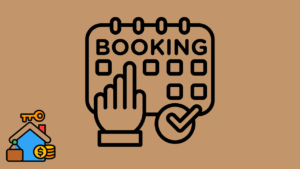As a writer, the most exciting aspect of self-publishing a book is the cover design. It must be engaging and can draw everyone’s attention immediately, while also providing subtle hints about the tale. The whole process can be a little overwhelming. In this article, you’ll see a step-by-step guide & tutorial to making a stunning book cover.
What you think makes a great book cover could very well be the polar opposite. So, it’s critical to grasp all the fundamental concepts of creating a successful one because a book is always judged by its cover.
In this article, we’ll look at some of the essential principles that will help to create a good book cover. A captivating book cover will pique people’s interest in your title. So, here’s all the facts of creating a fantastic book cover.
How to Make Better Book Covers?
Professional cover designers can provide you with numerous concepts depending on your storyline and preferences if you’re working with a Self-Publishing Company. However, there are some secrets about book cover design experts have revealed, that you will be pleased to learn. Let’s get down to the details.
Understanding Your Goal
There are many tiny details that people do not discuss when it comes to making one. While developing a cover, you have just one purpose in mind that is to sell the book. Yes, that is your ultimate purpose, but your number one goal with the book cover is to provide clarity.
Clarity should be provided in terms of what the book is about, what genre it belongs to, and whether it is something that a reader will recognize, identify, and be interested in. This means you’ll need to learn how to communicate your vision to the cover designer, so they can incorporate it into the design.
Expressing the Design to Your Designer
Writing a summary of the book is a wonderful way to explain the picture. This implies that you must define what the book is about, who it is about (maybe adding a line or two of character description), who the book’s target audience is, and then compare it with other books in the same category.
Describe the Genre Adequately
If you let the cover designer know that your book is a thriller you will fail. Years of trial and error have taught specialists that this will not work. You need to be a little more detailed than that. You must specify whether your work is a psychological thriller or a crime thriller, and continue from there.
There are various sub-genres of genres. Therefore, the more specific and detailed you can be in your description to your cover designer, the more likely you are to succeed because you will be offering a clearer vision.
No Need to Portray Everything: Guide & tutorial to Making a Book Cover
As a writer, your book is your most treasured commodity, therefore it’s logical that you’d want the cover to accurately reflect the story within. That, however, would be a mistake, as you will only confuse the designer and will end up with a design that is also confusing.
Clarify your passion and concentrate on the most important elements of the story, such as the protagonist, the time frame, and the setting. As a result, your design will be basic and provide just enough information to interest readers.
5 Rudiments of a Book Cover
If you look at any book cover, you will find only 5 features. These are as follows:
- title of the book
- the series statement or subtitle depending on the book
- Author-name
- the foreground (the main subject of the cover)
- the background
You should know how to communicate your ideas to your cover design. Contemplate what you’d like to see in the front, and what kind of model you’d like your character to be. The most overlooked aspect of it is the background.
So, while deciding about the book design, think about the type of book you wrote and how the background might express the story. Isolate each part of your cover and consider it separately. This will assist you in providing better and more targeted input using our step-by-step book cover tutorial.
Finding the Right Designer: Guide & tutorial to Making a Book Cover
Finding a decent cover designer might be difficult, and it is the most basic question. Begin by researching self-published works in your category. Look for the cover designer on the copyright page of high-ranking books. Investigate those designers and choose one that fits your budget.
This way you will have a designer who is experienced in your genre and has made covers that are selling. If you are working with a self-publishing company that shouldn’t be a problem as they will already have designers catered to your subjects.
Create a Mood Board
Another wonderful way to convey your concept is to make a mood board with all of the book covers that are similar to your book and genre, and show it to your designer. That will be a big help for your designer because it will provide them with a wealth of visual information of what you are looking for in terms of the cover.
When you receive a few design samples, you may compare them to your mood board to see how they go in with the rest of the books. This is a suggestion that your designer will greatly appreciate with our step-by-step book cover tutorial.
The Book Cover Production Table
| Step | Goal | What To Decide | Tools To Use | Approval Check |
|---|---|---|---|---|
| Audience And Shelf Review | Align with genre expectations while staying distinctive | Positioning line, energy level, reference set | Store screenshots, simple mood board | A friend can name the genre without help |
| Story To Visual Translation | Choose one anchor and one accent that carry theme | Main object or scene, supporting motif | Sketches, photo references, texture swatches | Test tells the same story in one sentence |
| Visual System | Create consistent type, color, and shapes | Title font, secondary font, two color palette | Font manager, color palette tool | Title reads at thumbnail size |
| Concept Drafts | Explore layout options without getting stuck | Five layouts, each with a different image approach | Thumbnails, quick mockups, grid overlays | Two concepts feel strong in silence tests |
| Full Jacket Plan | Keep spine and back as considered as front | Spine type, back copy order, barcode space | Templates from printer, page layout app | Spine reads from a meter away |
| Production Specs | Prevent export surprises at upload time | Trim size, bleed, safe area, color mode | Print spec sheet, export presets | Preflight check passes with no warnings |
| Proofing | Catch issues before quantity print or launch | Paper proof, grayscale test, mobile thumbnail | Office print, pro proof, phone view | Third party can read and recall title easily |
Copy the table into your project doc and tick each box as you move.
Common Mistakes And Easy Fixes
Overcrowding the frame. Too many elements make the title hard to scan. Fix it by choosing one anchor object and removing secondary textures until the hierarchy breathes.
Fancy type that fights legibility. Delicate scripts and thin serifs collapse at small sizes. Fix it by testing at thumbnail size and increasing contrast or switching to a sturdier weight.
Colors that blend into each other. Low contrast between title and background lowers impact. Fix it by choosing a complementary value, not only a complementary hue, and adding a subtle shadow or glow set with restraint.
Stock images that look generic. Readers notice. Fix it by creative cropping, color grading, or commissioning a bespoke illustration. Even a simple vector motif can feel unique when paired with strong type.
Ignoring the spine. Online you only see the front, in stores the spine sells the book. Fix it by prioritizing contrast and large type on the spine even if it nudges the front layout slightly.
Time to Design the Book Cover: Guide to Making a Book Cover
Now that we have revealed all the secrets to designing a book cover, guide rather than becoming stressful the entire process should be more enjoyable. Just remember to focus on the key concepts, and project a clear picture of your requirement to the designer.
Good luck!








